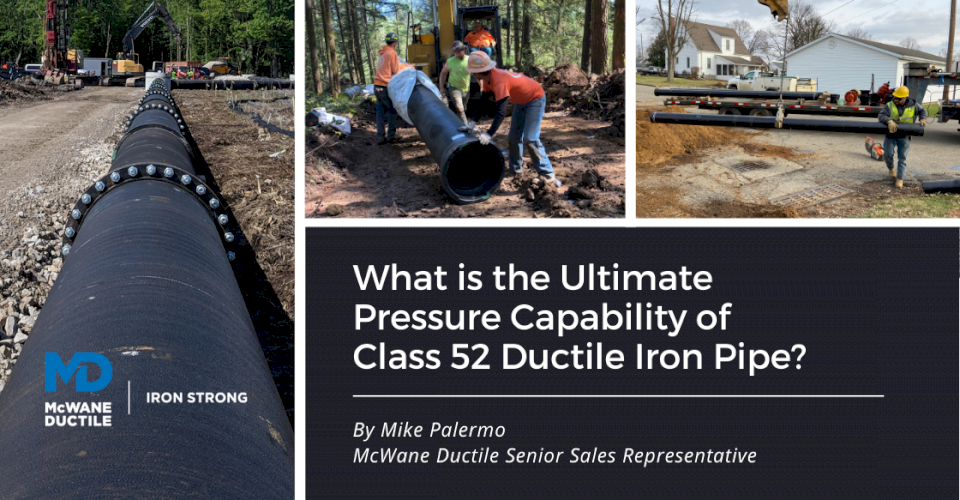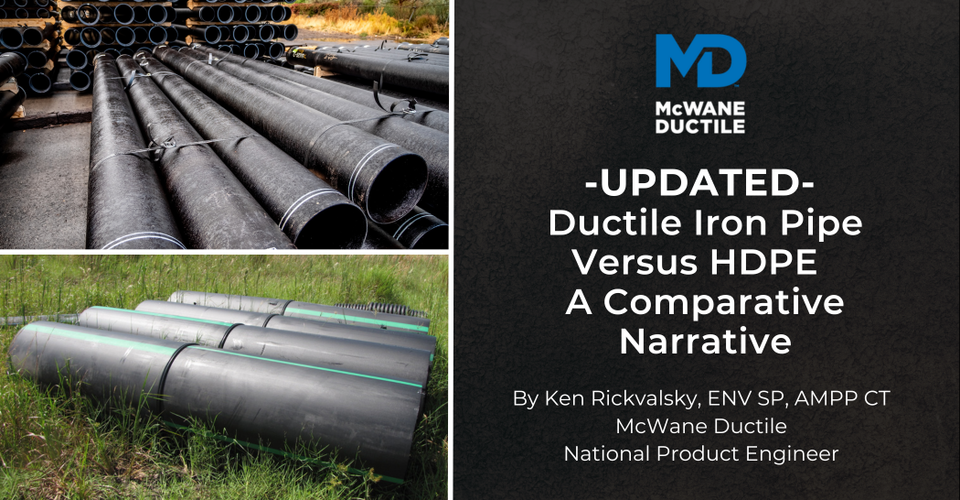-
Why Is Using the Right Design Criteria Important in Calculating Restraint Requirements?
11/19/2021 In Installation TechnicalWhen I first started my engineering career, I was placed in charge of coordinating the relocation of water transmission and distribution pipelines to accommodate the construction of an interstate highway through a city of approximately 180,000 residents. Many times, these projects required pre-poured thrust block restraints due to the amended connections between new and old waterlines in a short timeframe so as not to leave customers inordinately out of water for long periods of time.
-
Hydrotesting on Slopes: The Hills Have PSI!
10/28/2021 In Installation TechnicalDear Ditch Doctor: Out here in the western United States, we wind up with a lot of pipelines installed up or down serious hills, dare I say mountains as well? We are good at the construction part, yet time after time we struggle with getting a satisfactory post-installation hydrostatic test on the pipeline, especially with inclined installations. Often the pipeline drops anywhere from 20 to 50 psi on the gauge and can do that several times or more until we take some sort of drastic redo/restart on the test procedures.
-
Barrel Rating vs. Joint Rating for Ductile Iron Pipe: Is There a Difference?
10/15/2021 In TechnicalWhenever the word "rating" is used regarding Ductile iron pipe (DI pipe), a 100-psi surge allowance and a safety factor of 2.0 are consistently included for all wall classes. This leads to conservative yet versatile designs for the long-term performance of utility pipelines of all kinds in various or changing conditions. Hence the basic universal rating for DI pipe is 350-psi which equates to a minimum of 900-psi of hydrostatic pressure containment within the pipeline.
-
Corrosion Control - Inside and Out - for Ductile Iron Pipe
10/08/2021 In Products TechnicalWhen it comes to water system project design, there are many factors to consider when utilizing Ductile iron pipe (DI pipe). One of the most important is corrosion prevention, and if correctly addressed, there are great opportunities to design your systems with projected life spans extending well beyond 100 years.
-
What are Some Top FAQs on Ductile Iron Pipe?
09/13/2021 In Installation Products TechnicalAs a manufacturer of Ductile iron pipe (DI pipe), we often field questions from water professionals regarding DI pipe, its uses, and how to install it properly. We even receive numerous questions about alternate materials, their differences, their uses, and the best choice for the application. And of course, when you ask, we answer…honestly, even when the answer doesn’t include Ductile iron. In this Iron Strong Blog, we’ll cover a few of our frequently asked questions (FAQ) and provide some solutions. We will continue with this FAQ series in the upcoming months.
-
How to Use the McWane Pocket Engineer Flow Calculator – Number 2 in a Series of 11
07/21/2021 In Products TechnicalHow much water can I get through that pipe? What size pipe should I use to carry that much water? Two similar-sounding questions that, in truth, are entirely different. Not to mention, both are missing the keyword to consider in resolving each question, that word being "efficiently." The McWane Pocket Engineer (PE) Flow Calculator quickly and easily answers all three concerns - flow rate, pipe size, and flow efficiency.
-
What Did I Dig Up - Gray Iron or Ductile Iron Pipe?
06/25/2021 In Products TechnicalSo, the site plans say, "… connect to existing iron pipe." Now that we’ve dug down to it, I can’t tell if it is gray iron or Ductile iron pipe. Are there ways to reliably distinguish between the two without some physical testing on a sample? In this blog, we'll take a closer look at the characteristics and differences between the two types of pipe.
-
What is Open Procurement from an Engineer’s and Utility Manager’s Perspective?
06/11/2021 In Products TechnicalThere is a national effort to deny engineers, utilities, municipalities, public entities, and other waterworks professionals the ability to design water, wastewater, and stormwater projects in the manner that best serves the needs of their community. This effort focuses on water system piping but could be expanded to other infrastructure materials, as well. This blog contains a Q&A session conducted with a civil engineer, John Simpson, and a former utility manager, Roy Mundy, regarding Open Procurement.
-
What is the Ultimate Pressure Capability of Class 52 Ductile Iron Pipe?
05/21/2021 In Products TechnicalCast iron pipe was introduced to the United States in 1816. Since then, numerous other piping materials have been offered and utilized. None were able to supplant cast iron as the leading performer until Ductile iron pipe became available. The introduction of Ductile iron pipe (DI pipe) to the marketplace in 1955 remains among the most significant advancements in the history of the pressure pipe industry. It was quickly recognized as a pipe material with all the established durability of gray cast iron, yet with added strength and resiliency from its innate and lasting flexibility. It was first used for special and severe conditions of high pressure, such as where water hammer and excessive external loads might have existed.
-
How to Use The McWane Pocket Engineer Volume Calculator – the First in a Series of 11
05/07/2021 In Products TechnicalIn recent years, an increasing number of locales and authorities have adopted greater controls of the water used in hydrostatic testing, flushing, and disinfection of utility pipelines, post-installation. Whether from a feeder hydrant to be metered, or when there might be a fee applied on the volume of water used, how does an engineer, contractor, or inspector compute the amount of water needed for these tasks? Sometimes it is required to demonstrate during flushing operations that the water inside a pipeline section has been “exchanged” a designated number of times during the specified flushing. So, just how much water does it take to fill or flush 1,500 feet of 12-inch class 52 DI pipe?
Latest Posts
- Can Joining Water Works Industry Organizations Help You Grow Professionally? 10/21/2025 In Careers WaterWorks
- How Does Ductile Iron Pipe Provide Proven Resilience to Seismic Events? 09/04/2025 In Products Resiliency Technical
- How to Secure Green Reserve Sustainability Incentives Using State Revolving Funding & Ductile Iron Pipe 07/29/2025 In Energy Products Technical
- UPDATED - Ductile Iron Pipe Versus HDPE - A Comparative Narrative 05/29/2025 In Comparisons Products Technical















